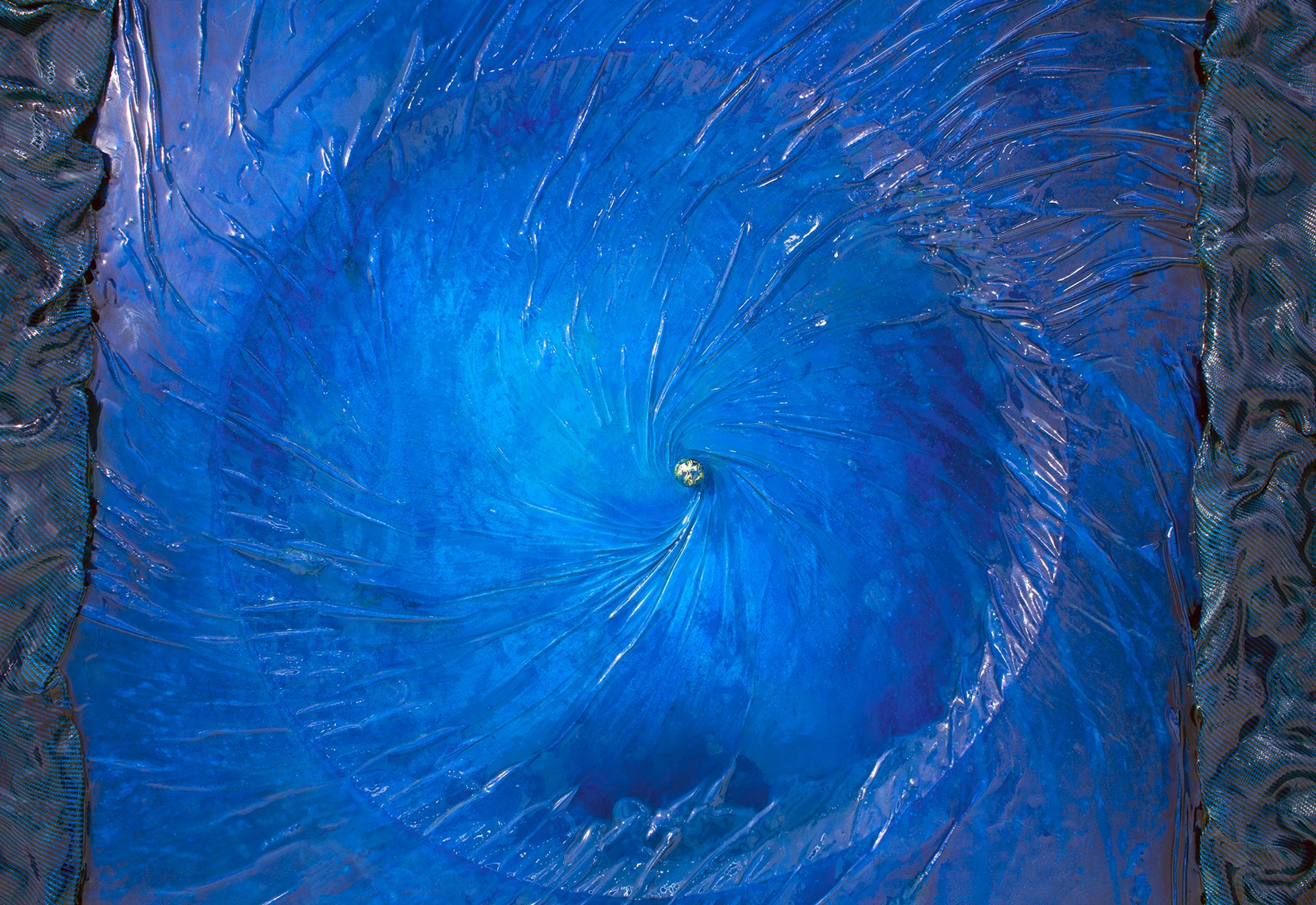The Deep Blue in Anastasios Nyfadopoulos’ Sculpture

The Deep Blue in Anastasios Nyfadopoulos’ Sculpture
As one of the most recognized visual artists of abstract art, Wassily Wassilyevich Kandinsky (1866-1944) has written, the color of blue, the typical blue color of the sky, when submerged in black, suggests the non-sadness, and this fact constitutes an immense deepening in serious situations, where obviously, the end doesn’t and cannot exist.
It seems that the self-taught young sculptor Anastasios Nyfadopoulos (1992) embraces the thoughts of this great Russian creator. He is known to the public for the creation of “Crisis,” an installation of monumental dimensions placed in 2015 at 602 Vouliagmenis Avenue, Athens. As “Crisis” is the first public monument addressing the painful socio-economic conditions that our country is still facing, it is natural that subsequently the awareness of the young sculptor was expanded to a cosmic dimension. So, in his recent works, where he uses materials from modern industrial technology (carbon fibers, fiberglass, resins), he traces, through the blue color, the connection in the relation of humankind and the universe.

Adding gold in his creations gives a more dignified, almost metaphysical touch – let’s remember at this point the combination of the two colors, blue and gold, in icons at the Monastery of Sinai, in the second half of the sixth century, as well as in mosaics at the Monastery of Dafniou in the end of the eleventh century. The artist uses the gold to show that an artist can and should submit his own testimony; he should become a witness (the word with two meanings, the legal as well as the religious). A characteristic element of his work is the fact that the materials of carbon fiber and fiberglass, when used, cover the eyes of his figures, implying the relative limitation with which we feel and view the world, while the covered eyes of the figures indicate that we should see beyond any social filters imposed on us, that we should see with our soul – “always open, always awake the eyes of my soul” as our national poet Dionysios Solomos declared in his poem Free Besieged. Another meaning of the carbon fiber in some of his works is to depict the tremendous pressure on the soul of a man flooded by negative feelings and deadlocks that do not allow him to connect to his primary nature.
The historian Michel Pastoureau (1947) in his fundamental study regarding the color of blue concludes that from the end of the fifteenth century, the green color gradually gives its place in the precursor color of blue for depicting the element of water, turning the cold blue into the beloved color of modern west society.
The artworks of Anastasios Nyfadopoulos in this exhibition affect the viewers in a rather homeopathic way: the cold blue color of our today’s society can be confronted only through its difficult, sometimes dramatic, transcendence and with the addition of the halo, of the gold.
Dimitris Pavlopoulos
Professor of History of Art
Faculty of History and Archaeology
National and Kapodistrian University of Athens
This post is a translation of the original text written in Greek.

